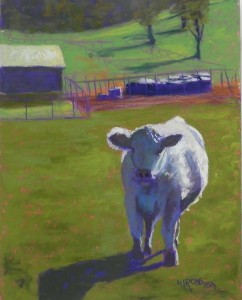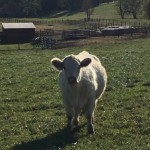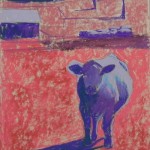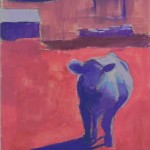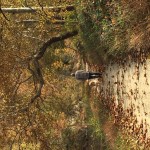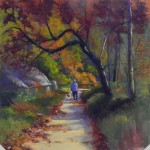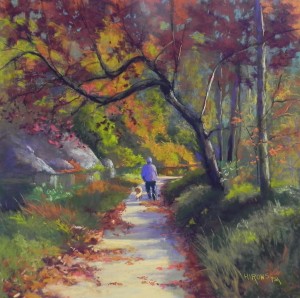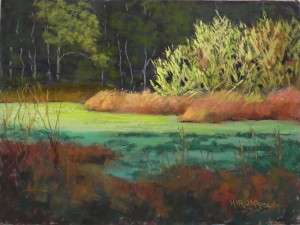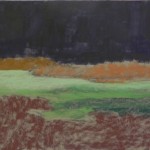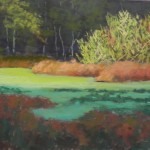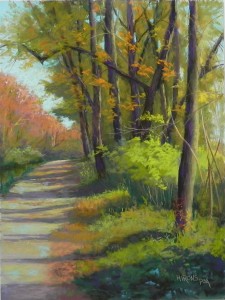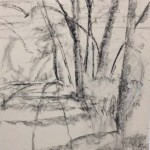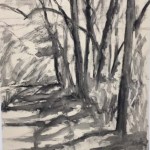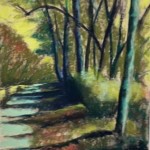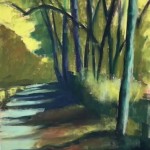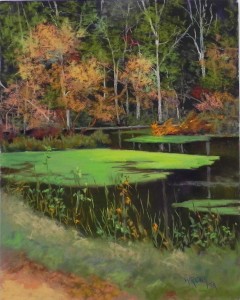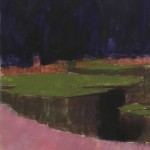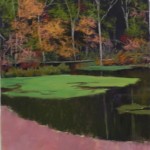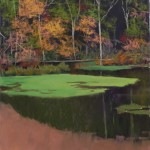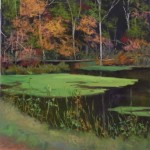And now for something completely different! In late October my husband and I drove to Pennsylvania to see a fellow who I visit in prison. On the way we drove through rural Maryland and I stopped and took pictures. I was running up the road in Uniontown to take pictures of the backs of houses when this fellow took a real interest in me! I was instantly besotted!!! What a gorgeous cow–well, steer I guess. Anyway, his innocent look and the lovely light and shadow on him were just wonderful. Two days after taking the picture, the shootings at the synagogue in Pittsburgh took place. I decided to use this painting to say something about my unhappiness with the state of our country and its leadership. The rising level of anti-Semitism is something I hoped I’d never see in this country. So, this is where the title comes from.
During one of my classes, I did a quick drawing of him. It came out really good. I measured it as a 12 x 9 and my idea was to enlarge it to a 24 x 18. I thought he’d be the perfect project for our Open Studios weekend. I spent all Friday night trying to draw this &&^^*^% cow! People kept coming in and giving me advice and I finally gave up. As I mentioned in an earlier post, the 18 x 24 board was used to do the Towpath, Violette’s Lock painting and I was very happy with that.
But, I still wanted to do Mr. Cow. So I decided that the answer was to trace my drawing and use an 11 x 14 board. I used tracing paper and decided to try using pan pastel on the back of the drawing. It barely gave me an image–don’t do this! But I got the drawing down, then refined it.
There wasn’t much color in the photo, as you can see. Greens with a white cow in light and shadow. I wanted my cow to be colorful but not electric blue or purple, as you see in some paintings! I used Caran de’ache hard pastels for much of the underpainting because they have light violets and blues that aren’t available in NuPastel. The red under the grass is also of this brand. I was worried about doing the underpainting, having gone through such agony with the drawing. But it worked OK.
I kept the background pretty simple. In the photo, the roof and the light on the cow are about the same. I started with a green in the roof and added some yellow, but nothing like the light on the cow. One thing I’m not sure I’m pleased with is the use of the cooler green in the grass in the background. It probably should be closer to the foreground, as seen in the photo. (A note also that when I was trying to do this as an 18 x 24, the large amount of grass was much more of an issue than it is in this smaller size.)
For the cow, I layered violet, blue, green, and brown in the dark areas. For the light, I began with a bright, very light blue green, then pink, some yellow, light violet, then an Art Spectrum extra soft lemon yellow which really made him come alive!
This went very quickly and I enjoyed doing it. I could have spent more time on it, perhaps, but I think it says what I wanted to say.

